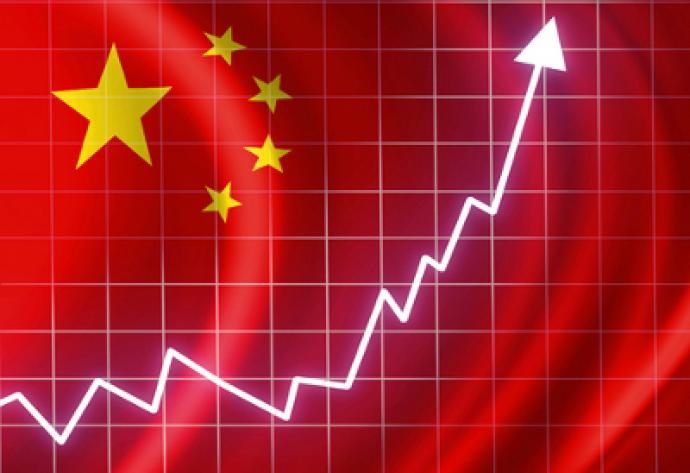By Reuters : China's economy is likely to have remained on a stable footing in May, buoyed by solid gains in trade and investment as economic ties with the United States take a positive turn and infrastructure spending cushions domestic growth.
A Reuters poll of indicators from trade and industrial output to loans and property investment, is expected to show that economic growth held up nicely into the second quarter, defying worries of a sharp slowdown. Beijing has curbed lending to avert bubbles and debt risks, but tougher regulations have raised concerns the measures could go too far and hurt growth.
Economists, however, said they felt reassured by positive signals from the top leaders of China and the United States that a trade war between the two economic power-houses was avoidable.
"We used to be worried about the negative impact of possible trade frictions on China's exports to the United States, but now that fear has eased," said Yan Ling, a Shenzhen-based analyst with China Merchant Securities.
"We now think it will be more about increasing U.S. imports to China."
In sign of progress, China and the United States agreed in May to take action by mid-July to increase access for U.S. financial firms and expand trade in beef and chicken among other steps as part of Washington's drive to cut its trade deficit with Beijing.
The value of Chinese exports was seen rising 7.0 percent in May from a year earlier, and imports by 8.5 percent, slower than April's growth rates of 8.0 percent and 11.9 percent, respectively. But the pace is relatively positive given declines in commodity prices and bodes well for China's trade outlook.
China's trade surplus for May was expected to rise to $46.32 billion, compared with $38.05 billion in April.
Many analysts had expected Beijing's intensifying crackdown on unscrupulous lending and a cooling property market to hit growth hard after a surprisingly optimistic first quarter.
Indeed, growth in the world's second-largest economy was more muted in May, as fading government stimulus and financial regulatory controls have increased financing costs and weighed on profitability for firms.
China's industrial output in May is expected to rise 6.3 percent, easing slightly from 6.5 percent growth in April, while producer prices were forecast to rise 5.7 percent from a 6.4 percent gain in April.
Producer prices have been cooling since March as iron ore and coal prices tumbled, pressured by fears that Chinese steel production is outweighing demand as the authorities rein in the red-hot property sector that has sparked fears of a market collapse.
Annual fixed asset investment in May likely grew 8.8 percent, moderating from 8.9 percent in April, as policymakers continued their efforts to cool the property sector, showing no intention of relaxing harsh administrative curbs that many market observers say have effectively frozen the frothy markets.
Retail sales were expected to be stable at 10.6 percent, down from 10.7 percent in April, likely due to weaker auto sales.
Inflation is expected to accelerate in May, with consumer prices predicted to rise 1.5 percent, a modest pick-up from April's 1.2 percent.
However, that is still well below Beijing's official inflation target of 3 percent in 2017, suggesting policymakers still have room to tighten the screw on credit and patch holes in the financial system after years of debt-fueled stimulus.
To be sure, while China's central bank has cautiously shifted to a tightening policy bias by raising short-term interest rates in recent months, the authorities have reiterated their support for the real economy, pledging to keep liquidity sufficient to avoid financial stress while carefully engineering reforms in its bubbly financial sector.
Thirty-nine economists polled by Reuters predicted Chinese banks had extended 900.0 billion yuan ($132.32 billion) in new loans in May, a still-solid figure versus 1.10 trillion yuan in April.
The growth rate in outstanding loans was expected to slow to 12.8 percent in May from 12.9 percent in April.
M2 money supply growth was also seen down a touch at 10.4 percent in May, from 10.5 percent in April, the slowest since July 2016, reflecting the moderately tighter policy stance by the People's Bank of China (PBOC).
Investors will also be keen to watch if China managed to retain its grip on capital outflows in an effort to safeguard its foreign reserves that fell rapidly in 2016.
The poll showed foreign exchange reserves edged up in May to $3.04 trillion from $3.03 trillion in April, during which a weakening in the greenback aided Beijing's efforts to contain capital outflows.
Analysts say volatility in currency valuations could also have given the reserves figure a boost.
"The fall in the dollar was pretty big while the euro appreciated visibly against the dollar, so those changes will lead to a more bullish figure," said Wang Lianqing, an analyst with Industrial Securities.
But French investment bank Natixis said in a report its capital flow tracker for China shows outflows for the second quarter will rise somewhat, reversing the recovery in the first quarter.

China May data to show stable growth as exports stay solid
5 Jun 2017 02:27 PM
Prices may be delayed by 5 seconds. Prices above are subject to our website terms and conditions. Prices are indicative only
© 2023 Equiti, All Rights Reserved